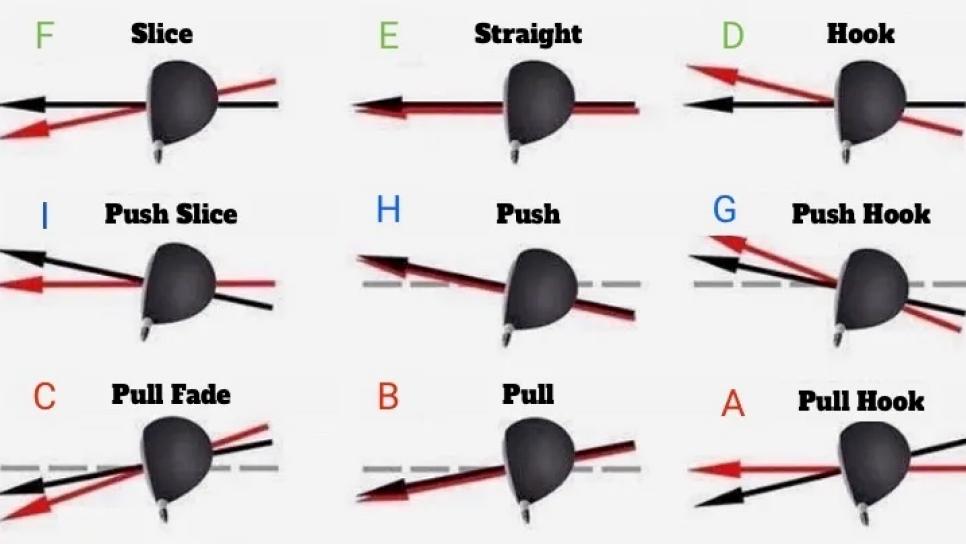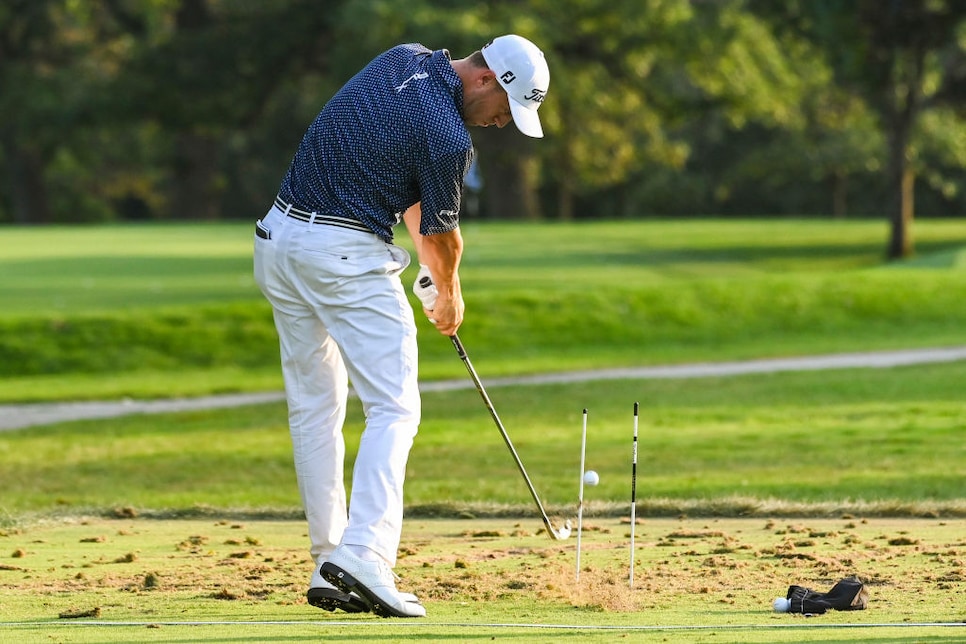Every golfer dreams of getting their handicap down, and we’ve got news for you. It’s easier to do than you might think. It takes a little bit of hard work, sure, but more importantly, it takes some smart work. That means knowing which things will benefit you the most and which are a waste of your time
For that, we asked a couple of our former college golfers and resident low handicappers on staff, associate editor Drew Powell (+2.6 handicap) and senior game improvement editor Luke Kerr-Dineen (1.3 handicap), to hear what they have to say.
1. Stop trying to hit too many shots
Shooting in the 70s is more attainable than you may think. All you need is a few simple shots that you’re able to repeat over and over. I recognise that’s often harder than it sounds, but do away with any notion that shooting in the 70s has to be flashy. I play with a lot of people who shoot between 75 and 79 most rounds by hitting the shots they’re comfortable with, as opposed to the “proper” shots. For example, their tee shots are always moving in the same direction.
Tiger's ability to continually reinvent his game over the years is truly amazing.
These days, Tiger only occasionally reaches for the draw off the tee. He's opting for big, beefy cuts instead.
Here's why:https://t.co/jAvYImdLcBpic.twitter.com/jV2M2yN477
— LKD (@LukeKerrDineen) February 18, 2023
They’re not focused on changing the shape or trajectory of shots. They often have one or two short game shots that they use – a low chip and a higher pitch. Nothing more. A lot of the 80s-shooters I play with are trying all sorts of shots that are better reserved for scratch handicappers or pros. Focus on repeating the shots in your arsenal – not adding new ones. – Drew Powell
2. Understand the ball flight basics
If you want to get better, you need to be able to understand what the golf ball is telling you. That way you’ll be able to accurately describe your problems to a teacher, and even do some DIY patchwork when you’re in the middle of the round, and everything is going wrong.
In a nutshell: pay attention to where the ball starts and where it ends in relation to where you’re aiming (we’ll get to how important that is). There’s an old saying in golf that the clubface sends it, the club path bends it. So, if the ball starts left and curves right, you’ve got an open clubface and probably swing from out-to-in. But if your ball starts to the right and curves to the right, that means your clubface is open but you may be swinging from in-to-out. Both shots went to the right, but they’re two very different problems with very different solutions. – Luke Kerr-Dineen
 3. Alignment is boring, but important
3. Alignment is boring, but important
Re-focus on the fundamentals – mainly alignment. As Butch Harmon says, “If you aim at nothing, you’ll hit it every time.” Try to commit to arriving at the course 20 minutes early and put an alignment stick down on the practice fairway. Make sure your feet, knees, hips and shoulders are all parallel to the stick, ensuring you’re properly aligned.
Take a few looks at the target to train your eyes to see correct alignment. If you tend to aim left or right of the target – as many mid-handicappers do – you’ll be forced to make compensations. You rarely see tour pros (or scratch handicappers, for that matter) hit balls on the range without a stick or club on the ground. Good fundamentals aren’t just for the better players. – DP

4. You don’t need to change everything all at once
The nature of my role means people tend to solicit me for free golf swing advice from time to time. I don’t mind (though keep in mind, you get what you pay for), but I always find it interesting how often golfers equate needing to make a change to their swing as needing to totally revamp it, tear down and start again.
Look for the middle ground: the smaller tweaks (like, as Drew says, your fundamentals!) that you can make to your swing slowly, with the limited time you do have, that will improve you along the way. The work you do on your golf swing is a process that never fully ends; it’s not all-or-nothing. – LKD
5. Your iron game holds the key
I’ll admit, I don’t keep stats as diligently as I did when I was in college. But, there are lots of great stat-tracking systems out there like Arccos, which can keep the same strokes gained numbers that the pros do.

When I was keeping track of those for my own game, I found that when I played my best, I gained more strokes with my iron play than any other part of my game. On the flip side, poor rounds often resulted from a big negative number in approach play. Solid iron play sets up the consistent birdie chances and easier par save opportunities needed to have a stress-free round. If your irons are off, you’ll be scrambling for pars all day. – DP
6. A little bit of time, a lot of feedback
Look, I get it, there’s something therapeutic about hitting golf balls on the driving range. But remember that the kind of practice that helps you the most is the kind that isn’t just physically taxing, but mentally, too.
Give yourself some feedback that doesn’t allow you to switch off your brain. This could come in the form of a golf swing drill, or as Drew said earlier, an alignment stick that will show you how your ball is flying in relation to your target. It could also mean practising your putting with a mirror and putting gates. Anything that will help you understand if what you’re doing is right or wrong, in the moment, will go a long way. – LKD
